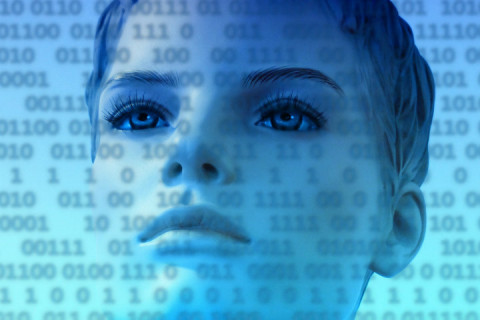The 10th episode in the series Better cities: The contribution of digital technology deals with the impact of ethical principles on four pillars of digitization: accessibility, software, infrastructure and data.
In the previous episode, I discussed design principles - guidelines and values - for digital technology. The report of the Rathenau Instituut Opwaarderen - Borgen van publieke waarden in de digitale samenleving concludes that government, industry, and society are still insufficiently using these principles. Below, I will consider their impact on four pillars of digitization: accessibility, software, infrastructure, and data. The next episodes will be focused on their impact on frequently used technologies.
Accessibility
Accessibility refers to the availability of high-speed Internet for everyone. This goes beyond just technical access. It also means that a municipality ensures that digital content is understandable and that citizens can use the options offered. Finally, everyone should have a working computer.
Free and safe Internet for all residents is a valuable amenity, including Wi-Fi in public areas. Leaving the latter to private providers such as the LinkNYC advertising kiosks in New York, which are popping up in other cities as well, is a bad thing. Companies such as Sidewalk Labs tempt municipalities by installing these kiosks for free. They are equipped with sensors that collect a huge amount of data from every device that connects to the Wi-Fi network: Not only the location and the operating system, but also the MAC address. With the help of analytical techniques, the route taken can be reconstructed. Combined with other public data from Facebook or Google, they provide insight into personal interests, sexual orientation, race, and political opinion of visitors.
The huge internet that connects everything and everyone also raises specters, which have to do with privacy-related uncertainty and forms of abuse, which appeared to include hacking of equipment that regulates your heartbeat.
That is why there is a wide search for alternatives. Worldwide, P2P neighborhood initiatives occur for a private network. Many of these are part of The Things Network. Instead of Wi-Fi, this network uses a protocol called LoRaWAN. Robust end-to-end encryption means that users don't have to worry about secure wireless hotspots, mobile data plans, or faltering Wi-Fi connectivity. The Things Network manages thousands of gateways and provides coverage to millions of people and a suite of open tools that enable citizens and entrepreneurs to build IoT applications at a low cost, with maximum security and that are easy to scale.
Software
Computer programs provide diverse applications, ranging from word processing to management systems. Looking for solutions that best fit the guidelines and ethical principles mentioned in the former episode, we quickly arrive at open-source software, as opposed to proprietary products from commercial providers. Not that the latter are objectionable in advance or that they are always more expensive. The most important thing to pay attention to is interchangeability (interoperability) with products from other providers to prevent you cannot get rid of them (lock in).
Open-source software offers advantages over proprietary solutions, especially if municipalities encourage city-wide use. Barcelona is leading the way in this regard. The city aims to fully self-manage its ICT services and radically improve digital public services, including privacy by design. This results in data sovereignty and in the use of free software, open data formats, open standards, interoperability and reusable applications and services.
Anyone looking for open-source software cannot ignore the Fiwarecommunity, which is similar in organization to Linux and consists of companies, start-ups and freelance developers and originated from an initiative of the EU. Fiware is providing open and sustainable software around public, royalty-free and implementation-driven standards.
Infrastructure
Computers are no longer the largest group of components of the digital infrastructure. Their number has been surpassed by so-called ubiquitous sensor networks (USN), such as smart meters, CCTV, microphones, and sensors. Sensor networks have the most diverse tasks, they monitor the environment (air quality, traffic density, unwanted visitors) and they are in machines, trains, and cars and even in people to transmit information about the functioning of vital components. Mike Matson calculated that by 2050 a city of 2 million inhabitants will have as many as a billion sensors, all connected by millions of kilometers of fiber optic cable or via Wi-Fi with data centers, carrier hotels (nodes where private networks converge) to eventually the Internet.
This hierarchically organized cross-linking is at odds with the guidelines and ethical principles formulated in the previous post. Internet criminals are given free rein and data breaches can spread like wildfires, like denial of service (DoS). In addition, the energy consumption is enormous, apart from blockchain. Edge computing is a viable alternative. The processing of the data is done locally and only results are uploaded on demand. This applies to sensors, mobile phones and possibly automated cars as well. A good example is the Array of Things Initiative. Ultimately, this will include 500 sensors, which will be installed in consultation with the population in Chicago. Their data is stored in each sensor apart and can be consulted online, if necessary, always involving several sensors and part of the data. Federated data systems are comparable. Data is stored in a decentralized way, but authorized users can use all data thanks to user interfaces.
Data
There is a growing realization that when it comes to data, not only quantity, but also quality counts. I will highlight some aspects.
Access to data
Personal data should only be available with permission from the owner. To protect this data, the EU project Decode proposes that owners can manage their data via blockchain technology. Many cities now have privacy guidelines, but only a few conduct privacy impact assessments as part of its data policy (p.18).
Quality
There is growing evidence that much of the data used in artificial intelligence as “learning sets” is flawed. This had already become painfully clear from facial recognition data in which minority groups are disproportionately represented. New research shows that this is also true in the field of healthcare. This involves data cascades, a sum of successive errors, the consequences of which only become clear after some time. Data turned out to be irrelevant, incomplete, incomparable, and even manipulated.
Data commons
Those for whom high-quality data is of great importance will pay extra attention to its collection. In. this case, initiating a data common is a godsend. Commons are shared resources managed by empowered communities based on mutually agreed and enforced rules. An example is the Data and Knowledge Hub for Healthy Urban Living (p.152), in which governments, companies, environmental groups and residents collect data for the development of a healthy living environment, using a federated data system. These groups are not only interested in the data, but also in the impact of its application.
Open date
Many cities apply the 'open by default' principle and make most of the data public, although the user-friendliness and efficiency sometimes leave something to be desired. Various data management systems are available as an open-source portal. One of the most prominent ones is CKAN, administered by the Open Knowledge Foundation. It contains tools for managing, publishing, finding, using, and sharing data collections. It offers an extensive search function and allows the possibility to view data in the form of maps, graphs, and tables. There is an active community of users who continue to develop the system and adapt it locally.
To make the data accessible, some cities also offer training courses and workshops. Barcelona's Open Data Challenge is an initiative for secondary school students that introduces them to the city's vast dat collection.
Safety
As the size of the collected data, the amount of entry points and the connectivity on the Internet increase, the security risks also become more severe. Decentralization, through edge computing and federated storage with blockchain technology, certainly contribute to security. But there is still a long way to go. Only half of the cities has a senior policy officer in this area. Techniques for authentication, encryption and signing that together form the basis for attribute-based identity are applied only incidentally. This involves determining identity based on several characteristics of a user, such as function and location. Something completely different is Me and my shadow, a project that teaches Internet users to minimize their own trail and thus their visibility to Internet criminality.
There is still a world to win before the guidelines and ethical principles mentioned in the previous episode are sufficiently met. I emphasize again not to over-accentuate concepts such as 'big data', 'data-oriented policy' and the size of data sets. Instead, it is advisable to re-examine the foundations of scientific research. First and foremost is knowledge of the domain (1), resulting in research questions (2), followed by the choice of an appropriate research method (3), defining the type of data to be collected (4), the collection of these data (5), and finally their statistical processing to find evidence for substantiated hypothetical connections (6). The discussion of machine learning in the next episode will reveal that automatic processing of large data sets is mainly about discovering statistical connections, and that can have dire consequences.
Follow the link below to find one of the previous episodes or see which episodes are next, and this one for the Dutch version.






Excellent helpful information about Digital Infrastructure. Thanks for sharing.